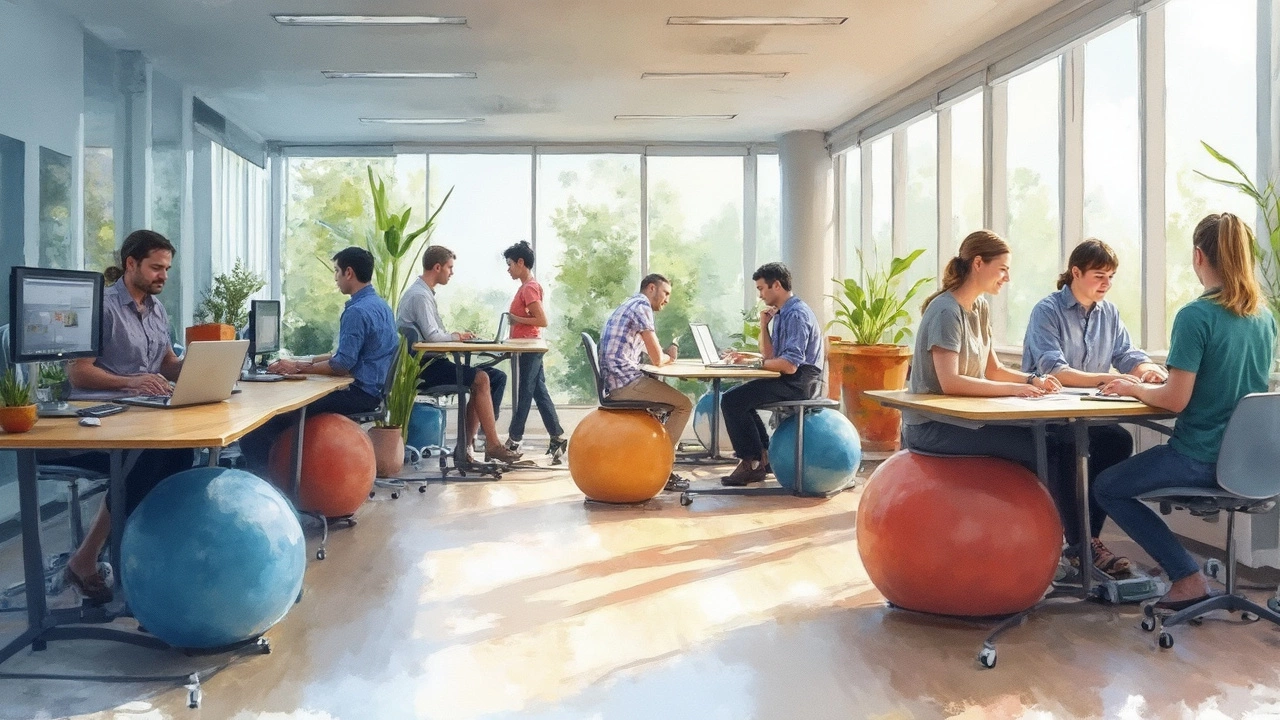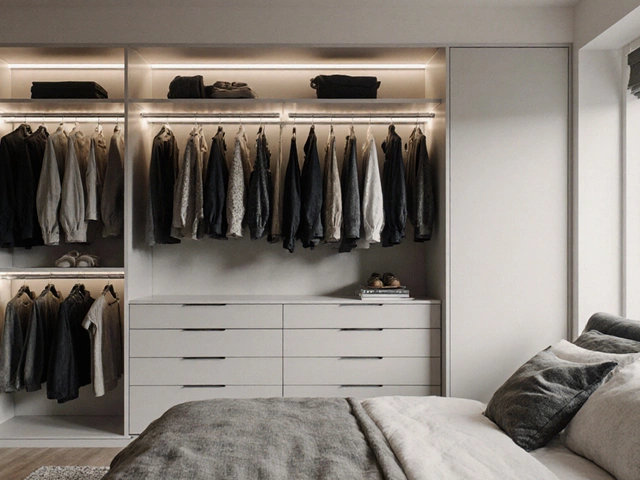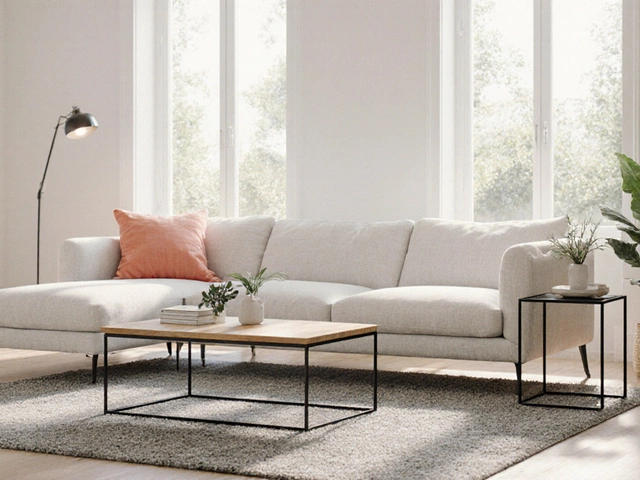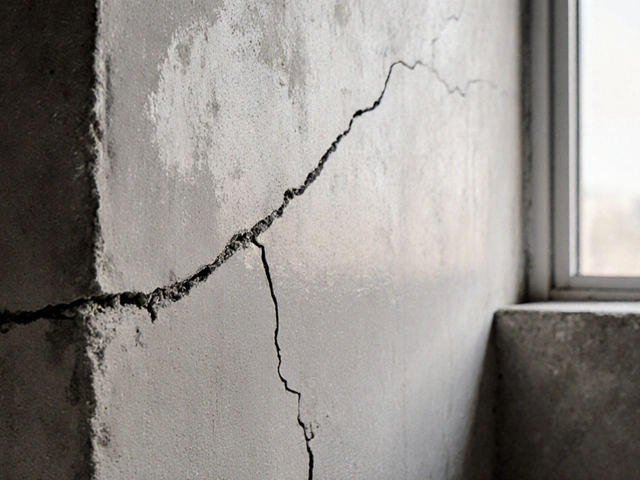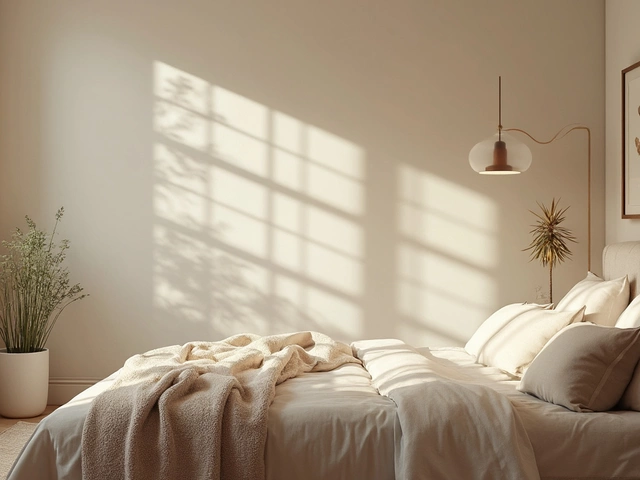So, you're tired of your office chair? Welcome to the club! Spending hours on end in the same seat can wear on both your patience and your posture. Luckily, shaking things up with alternatives can be both a comfort game-changer and a productivity booster.
Let's kick things off with exercise balls. Yep, those big inflatable spheres aren't just for the gym. Swapping your chair for one of these can get your core muscles engaged and improve balance. Just make sure it suits your desk height, or you'll find yourself hunching over work.
- The Rise of Non-Traditional Seating
- Exercise Balls: Bounce While You Work
- Kneeling Chairs: Support a Healthy Back
- Standing Desks: Flexible and Refreshing
- Treadmill Desks: Walk Through Your Workday
The Rise of Non-Traditional Seating
In recent years, the typical office chair has faced some serious competition. As people spend more and more time at their desks, there's been a shift toward finding ways to make office environments healthier and more flexible. Enter non-traditional seating options. They aren't just trendy; they've become a practical response to the growing awareness of how sitting affects our health.
The shift really gained traction thanks to increasing concerns about how prolonged sitting—dubbed the 'new smoking' by some experts—can be detrimental to our health. Cue the call for healthier alternatives: folks started looking for options that promote movement and improve posture, both vital for those marathon work sessions.
These office chair alternatives aren't just about preventing back pain. They're about creating a workspace that adapts to you, rather than the other way around. For example, flexible solutions like standing desks and treadmill desks emerged, putting a dynamic twist on the act of working.
Take Germany, for instance, where a growing number of workplaces have embraced non-traditional seating. It's not just about comfort but boosting productivity too. A study showed workers who had options to move during the day often reported feeling more energized and focused.
In the U.S., an increasing number of companies have started offering employees benefits that include investing in ergonomic seating. These efforts aim to reduce healthcare costs in the long run, since happier, healthier employees are less likely to develop chronic issues that could keep them out of work.
Ergonomic seating isn't one-size-fits-all, so what worked wonders for your yoga-instructor neighbor might not be your cup of tea. It's all about finding the right balance for your specific needs. And don't worry; as you'll see in the following sections, there's a whole range of choices to explore.
Exercise Balls: Bounce While You Work
Did you know that sitting on an exercise ball can actually help you get fit while you work? These inflatable wonders, often found in gyms, are making their way into office spaces for good reason. The idea is simple: by perching on a moving surface, your body engages a range of muscles that you wouldn't use in a typical office chair.
When you sit on an exercise ball, also known as a stability ball, it requires continuous micro-adjustments to maintain your balance. This engages your core muscles, which can help improve back strength and posture over time. Plus, it keeps your body moving subtly throughout the day, which is a win.
Here's what you need to keep in mind if you're considering switching to an exercise ball:
- Size matters: The ball should be sized to allow your knees to be at a 90-degree angle or slightly lower when you sit at your desk. Generally, a 65 cm ball works well for most people.
- Quality counts: Look for balls that are burst-resistant to avoid any unwanted surprises.
- Moderation is key: It's a fun idea to use the ball along with other seating options to prevent fatigue. Consider using it a few hours a day rather than the whole eight-hour stretch.
If you're looking for a cost-effective, easy-to-implement way to shake up your workspace routine, an exercise ball might just be your new best friend. Plus, they're surprisingly affordable, usually costing between $20 and $50. So, why not give it a bounce?
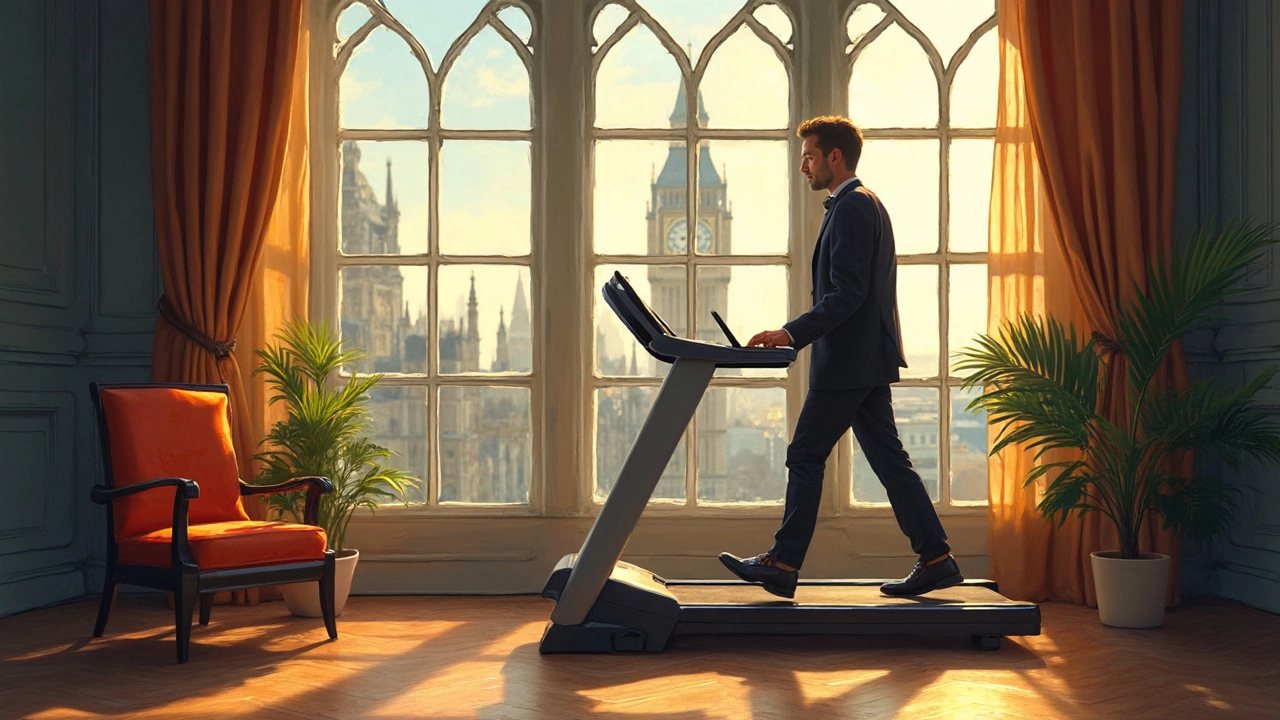
Kneeling Chairs: Support a Healthy Back
If you've ever wondered why your back hurts after a long day at the desk, you're not alone. Traditional office chairs don't always do our spines any favors. That's where kneeling chairs swoop in as a quirky yet practical solution. Designed to coax you into an active sitting position, these bad boys promote better posture and reduce back pain.
The basic idea? By distributing your weight between your butt and your shins, kneeling chairs tilt your pelvis forward. This positioning aligns your back and reduces stress on your spine. Pretty neat, right?
Kneeling chairs aren’t just about lessening discomfort; they can also help you stay more attentive. When you're not slouched back, it's easier to keep engaged with your work—and that means productivity win!
- Adjustability: This is a big one. Look for a kneeling chair where you can adjust the height and angle. You'll want it to match the height of your desk for the most comfort and efficiency.
- Material and Cushioning: Make sure it's got adequate padding. Sitting on hard surfaces is no fun, even with the best posture.
- Usage Time: These are great for periods of the day, but you might want to switch things up. Mix in some standing or regular chair-sitting to keep things balanced.
Choosing a kneeling chair as an office chair alternative means saying goodbye to some of that nagging back pain and hello to a more dynamic work environment. Just think of it as another tool in your comfort toolkit!
Standing Desks: Flexible and Refreshing
Have you ever thought about ditching your chair and standing while you work? It's a thing, and it's catching on like wildfire. Standing desks have become a popular choice for those looking to shake up their traditional setup without going too wild. Lifting your work to a standing level can make a world of difference in how you feel throughout the day.
Standing desks offer the benefit of reducing back pain, improving posture, and even boosting productivity. A study found that workers using standing desks were more productive than their sitting colleagues by about 45%. Not too shabby, right? Plus, you're burning more calories standing than sitting, which is a neat bonus.
When you're setting up a standing desk, comfort is key. Make sure to adjust your screen so that it's at eye level and keep your keyboard at a comfortable height to avoid wrist strain. Get yourself a cushy mat for your feet to prevent fatigue from standing on a hard floor for too long.
Thinking of jumping on the standing desk bandwagon but worried about missing the comfort of sitting? No worries. Consider a convertible desk that lets you switch between sitting and standing. These desks give you the best of both worlds, allowing for a more dynamic work style.
A little heads up, though—start slow. Growing pains are real when you first switch to standing desks. Alternate between standing and sitting to get your body used to it. Trust me, your feet will thank you.

Treadmill Desks: Walk Through Your Workday
Sure, sitting can get boring, but who says you need to stay put while working? A treadmill desk lets you get those steps in without sacrificing productivity. Imagine fitting exercise into your routine without losing work hours. Sounds like a win-win, right?
So, what exactly is a treadmill desk? It's a treadmill with an adjustable desk on top where you can place your laptop, monitor, or notepad. The beauty of it is you can walk slowly while typing or attending virtual meetings. Most treadmill desks let you adjust the speed and desk height, making it easier to tailor to your daily tasks.
A fun fact to throw around is that walking at a leisurely pace can help you burn about 100 to 130 calories an hour. It's like taking a quick jog without leaving your workspace! Plus, studies have noted that moving throughout the day can lift your mood and even enhance your creativity. Feeling stuck on a project? A little stroll might just spark a fresh idea.
Here are a few tips to get the most out of your treadmill desk:
- Start slow. Begin with 20-minute sessions a few times a day and gradually increase as you feel comfortable.
- Wear supportive shoes to keep your feet happy.
- Ensure your desk height keeps your elbows at a 90-degree angle to avoid strain.
- Keep sessions to a pace that feels comfortable so your focus stays sharp.
If you're ready to jump into a more active work routine, investing in a treadmill desk could be the perfect solution. Just think, who knew combining work with a bit of cardio could be the key to a healthier, more dynamic workday?
